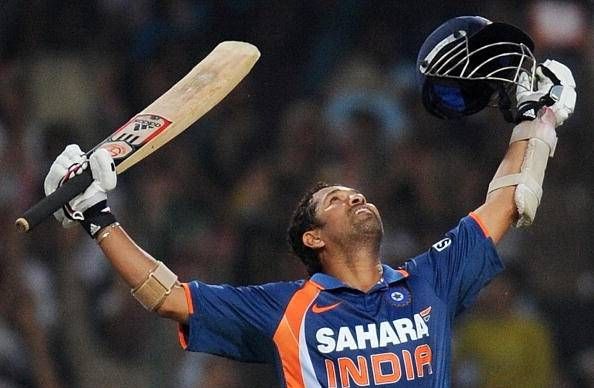
The changing face of ODIs

Head towards the skies, bat raised in acknowledgement, Sachin Tendulkar completed a herculean effort on 24th February 2010, becoming the first batsman to hit a double century in one-dayers. It wasn’t long before God’s disciples followed in his footsteps.
Sehwag was battling poor form when India played West Indies at Indore in 2011. Displaying his full array of strokes and taking advantage of the reprieves that the fielding team provided, he went on to score 219, off only 149 balls.
Rohit Sharma achieved an astonishing first in 2014, scoring two double centuries in ODIs. His mind numbing 264 had followed the blistering 209 against the Australians the previous year.
Chris Gayle is no ordinary batsman. He thrashes the ball all over the park, makes the bowlers pay for erring in line and dispatches even the good balls past the ropes. Bad form notwithstanding, he cashed in on a hapless Zimbabwean attack to score 215 in a group stage game of this year’s WC. His was the fifth ODI double ton overall, coming exactly five years after Tendulkar first reached the milestone. Martin Guptill set the benchmark higher up, scoring a remarkable 237 in the quarter finals against Gayle’s team. That brought the tally to six. No one had scored a double century in the first forty years of ODIs. With the turn of this decade, five have. Add to this the consistent 400 plus team scores and the new fastest 50 and 100 records in the last decade.
What brought such changes to the ODI game?
Experts point out to a number of reasons, ranging from small grounds and broad bats to the changing field restrictions, making the game more batsman-oriented. AB de Villiers completed the fastest century ever earlier this year, off only 31 balls, with a little help from the shorter boundaries and a fine pitch at Johannesburg.
Also, a major reason can be attributed to the two-balls per innings rule: Teams have to now use two new balls from each end. This results in the ball staying harder over the course of the innings, making it easier to hit, and also preventing reverse swing. On a good batting surface where the ball isn’t already doing much, it can be highly beneficial to the team batting first.
The five-fielder rule has been another nail in the bowlers’ coffin. Only two fielders are allowed outside the 30 yards circle for the first ten overs. The captain can station just three outside the circle during the five Powerplay overs.
The impact of T20
It’s no coincidence that the rise of the T20 format has matched this change in ODIs. The middle overs were supposed to be a time for providing stability and rotating the strike. T20s have diminished the length of these middle overs. For the first 20 overs, the team takes its chances, racing up to a good start. The Powerplay is generally taken from the 35th to the 40th, while the last 10 overs are the customary sixty deliveries to score heavily off.
This has resulted in more than 15 instances of 400 plus scores in ODIs. There wasn’t even one before 2006. The “settling phase” for a batsman is disappearing as those coming in during the Powerplay are expected to start finding boundaries as soon as they arrive. T20 hitters have been installed in ODI teams. Few others have retooled themselves to match the changing times. Players like de Villiers and Sangakkara have evolved their game and taken it to the next level. Innovative shots like the switch-hit, the ramp shot and whatnots are surfacing. Long gone are the days when team totals of over 250 were deemed competitive. The term “safe-total” is now obsolete in the commentators’ dictionary. With the ever changing dynamics of this game, clever batters and helpful conditions, the sky is the limit.